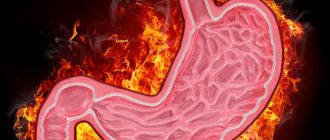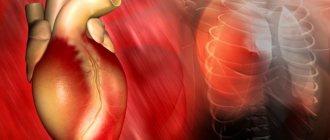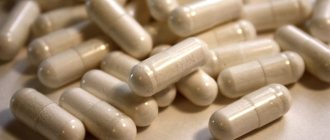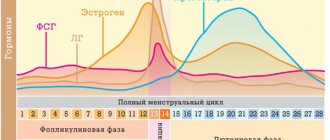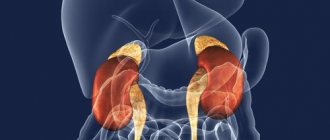- Risk of thrombosis and thromboembolism
- Systemic therapy
During menopause, a woman's body undergoes restructuring. The ovaries stop producing estrogens, and this affects not only the woman’s reproductive system, but also the entire body as a whole. Hormone replacement therapy for menopause makes it easier to endure this stage, prolong youth and get rid of unpleasant symptoms. But is such treatment absolutely safe? Before starting therapy, you should definitely consult your doctor, weigh the pros and cons, and make sure there are no contraindications.
Hormone replacement therapy, prescribed to compensate for the symptoms of menopause, has both pros and cons.
Hormone therapy - pros and cons
Hormone replacement therapy is a relatively new method of alleviating a woman’s condition during menopause. This type of treatment has become widespread in the last twenty years. Currently, every fourth woman uses it. But specialists have an ambiguous attitude towards replacement therapy. The subject of debate is both usefulness and effectiveness, as well as negative impacts.
Proponents of therapy believe that hormone replacement during the difficult period of menopause will allow all body systems to function without interruption. The natural slowdown in the production of progesterone, and then estrogen, leads to disruption in the functioning of various organs, hormonal imbalance, which leads to various disorders and diseases. Namely:
- menopause syndrome, characterized by sudden onset of hot flashes and excessive sweating, followed by bouts of chills. In this case, the psycho-emotional state ranges from euphoria to unmotivated anger and aggression. This condition is aggravated by rapid pulse, increased blood pressure, heart pain, memory impairment, sleep disturbance, depression, headaches;
- disruption of the functioning of the genitourinary system, which leads to a decrease in sexual desire. The vaginal mucosa loses elasticity, becomes dry, causing itching and burning, as well as painful urination and urinary incontinence;
- degenerative changes in the skin lead to dryness of the epidermis, which contributes to the formation of deep wrinkles and folds, thinning and brittleness of nails;
- changes in the metabolic process, which leads to an increase in body weight with a decrease in the daily diet, fluid retention in the body and its excessive accumulation in the lower leg muscles, poor absorption of glucose and increased sugar, etc.;
- prolonged menopause leads to disruption of the mineral composition of bones and the development of osteoporosis, hypertension, coronary heart disease, Alzheimer's disease, etc.
A large number of women during menopause, against the background of a deficiency of sex hormones, may experience a whole complex of the above pathologies of varying forms and severity. In this case, hormone replacement therapy is justified and allows you to prevent, stop or minimize pathologies of organs and systems, and reduce the likelihood of developing serious diseases.
Opponents of the method also have their justification. In their opinion, it is not an effective method because:
- implies great difficulty in drawing up the correct treatment regimen;
- does not have the ability to accurately calculate the amount of hormones for a particular woman in accordance with her individual needs;
- there is a high probability of side effects such as the development of cancer and vascular thrombosis;
- there is no reliable information on clinical studies conducted on the effectiveness of this method for treating complications of late menopause;
- has a large number of contraindications in the form of diseases of the circulatory system, kidneys and liver, alcohol abuse and nicotine addiction.
Recent research has proven that, subject to skillful prescription and selection of a treatment regimen, it is possible to achieve great positive results and minimize the risk of side effects. The key to success is timely initiation of therapy and age up to sixty years. And the most recent studies have proven that the positive result significantly exceeds all the disadvantages of HRT.
Advantages
The main advantage is that the use of HRT reduces the manifestations of menopausal syndrome. Vasomotor and psycho-emotional symptoms are relieved, the risk of developing osteoporosis and fractures is reduced, and the likelihood of cardiovascular complications - myocardial infarction, stroke - is reduced.
Relief of early symptoms of menopause
During menopause, 80% of women suffer from vasomotor and emotional-psychic symptoms.
- Vasomotor symptoms : hot flashes, increased sweating, headache, fluctuations in blood pressure.
- Emotional and mental symptoms : irritability, deterioration of memory and attention, tearfulness, depression, anxiety.
Early symptoms significantly reduce a woman’s quality of life. Hormone replacement therapy can reduce these symptoms within 2–3 months of starting medication. In most cases, symptoms disappear completely, less often they only decrease.
Prevention of urogenital diseases
Urogenital diseases occupy a special place among the symptoms of menopause. Their development is also based on a decrease in the level of estrogen in the blood. The vagina, urethra, and bladder are highly sensitive to estrogen levels. Estrogen deficiency can lead to the following symptoms:
- dryness of the vaginal mucosa;
- burning and itching in the vagina;
- pain during sexual intercourse;
- urinary incontinence;
- prolapse of the vagina, uterus.
HRT helps prevent the development of urogenital diseases. Both local and systemic medications can be used. However, for urogenital disorders, local medications are more often indicated - vaginal suppositories, cream, ointment. The use of estrogen-containing medications allows you to restore the normal structure of the mucous membrane of the vagina and bladder, and also prevents the development of infection and inflammation.
Prevention of osteoporosis
Osteoporosis is another common companion to menopause. Bone loss increases as a woman ages. Estrogen deficiency plays an important role in the destruction of bone tissue.
HRT allows you to slow down bone resorption, that is, reduce the rate of bone loss. Therapy should be prescribed as early as possible, since lost bone tissue is no longer restored.
Estrogen therapy can not only slow down the development of osteoporosis, but also reduce the incidence of fractures. The effect lasts as long as the woman takes hormonal drugs.
Cardioprotective effect
The incidence of heart disease increases with age. The following cardiovascular problems are especially common in women during menopause:
- cardiac ischemia;
- arterial hypertension;
- myocardial infarction;
- stroke.
Estrogens have a positive effect on the heart and blood vessels. They restore the function of the vascular endothelium, reduce blood pressure, and increase the contractile function of the heart. In addition, the protective effect is due to the influence of estrogens on cholesterol metabolism - with HRT, the risk of developing atherosclerosis is reduced.
Features and types of treatment
It is advisable to take drugs for hormonal therapy to compensate for the deficiency of hormones, the production of which has been stopped for some reason. Lack of hormones negatively affects blood production and cell division of various tissues. A deficiency leads to irreversible processes in the nervous system and brain pathology, and most importantly, affects the state of the reproductive system.
There are two types of hormone replacement therapy:
- Isolated hormone therapy involves the use of drugs based on one type of hormone, for example, estrogens.
- Combination therapy is based on the use of agents that contain several types of hormones.
The process of replenishing hormones aims not only at the complete restoration of reproductive function, but also at the elimination of symptoms, the manifestation of which is due to changes in the functioning of the ovaries and affecting the woman’s condition.
Achieving success depends on the timely administration of hormones, when the dysfunction of the body has not become irreversible.
Taking hormones is a long-term process, and optimal use is in small doses. Experts give preference to natural ingredients as opposed to synthetic analogues. The hormone complex is selected in such a way as to avoid negative effects and prevent the risk of complications.
Which drug the doctor chooses will depend on several factors:
- what age has the patient reached;
- Available contraindications;
- patient's weight;
- severe severity of menopausal symptoms;
- the presence of extragenital pathology.
Pros and cons of hormones during menopause
To make a final decision regarding taking hormones, you need to weigh the pros and cons.
The benefits of HRT include:
- improvement in a woman’s condition even before menopause, absence of hot flashes;
- reduction in the incidence of heart disease;
- reduction in overall mortality;
- prevention of osteoporosis;
- reducing the risk of diabetes;
- reducing the risk of colon cancer.
It is also worth mentioning the disadvantages of this approach, these include:
- increased incidence of strokes;
- increased risk of cholecystitis;
- increased risk of asthma;
- high risks of breast cancer.
Doctors are especially confused by the last point with “oncology,” although it is impossible to fully rely on research data. After all, women aged 60 years took part in the survey, plus, such a factor as smoking was not taken into account.
The survey was later repeated to obtain more accurate data. Then they were able to find out that women aged 45-60 years who took hormones during menopause were 30% more likely to develop cancer.
Indications for prescribing HRT
Two groups of patients who are indicated for hormonal therapy have been identified.
The first group includes cases aimed at treating menopausal symptoms. This:
- states of a neurotic nature, accompanied by sudden mood swings, stress, insomnia on the one hand or drowsiness on the other;
- “falling asleep” of the genitals;
- tachycardia, sudden hot flashes followed by chills, increased sweating;
- sudden changes in blood pressure, pressing pain in the heart, shortness of breath, headache and dizziness;
- frequent uterine bleeding accompanied by severe pain;
- nagging pain in the lower abdomen, disturbances in the musculoskeletal system;
- decreased libido, lack of lubrication of the vaginal mucosa;
- loss of skin elasticity, aging, formation of deep wrinkles due to increased dryness of the epidermis.
The second group includes cases associated with preventive measures aimed at preventing the occurrence of late complications. These are diseases of the cardiovascular system, osteoporosis. These include women:
- those who entered menopause early of any origin;
- having a history of osteoporosis;
- have already suffered from diseases of the cardiovascular system or have a hereditary predisposition to them.
In addition, HRT drugs can be indicated at any stage of menopause: to stabilize the cycle in premenopause, to reduce symptoms during menopause and to prevent neoplasms in postmenopause and for general improvement of health.
How is hormone therapy prescribed?
Depending on the patient’s health status, her age, and the intensity of symptoms, the gynecologist may prescribe different treatment regimens.
Monotherapy
This therapy is carried out with medications containing only estrogens or progesterone. When a woman has her uterus removed, she is prescribed to drink a drug that contains only estrogens.
The best drugs in this group: Ovestin, Estrofem, Divigel. Preparations containing only gestagens - artificial analogues of progesterone, are prescribed for HRT in combination with estrogen-containing drugs.
The content of estrogens and progestogens in various drugs.
The most popular tablets containing only gestagens include: Progesterone, Norkolut, Iprozhin, Duphaston and Utrozhestan. Ladies are often prescribed the following vaginal suppositories and gels containing the hormone gestagen: Prajisan, Crinon, Progestogel, Progesterone gel and Urozhestan suppositories. They can be taken from 14 to 25 days of the cycle.
Recently, gynecologists have successfully used the following treatment regimen. The woman is inserted with contraceptive hormonal intrauterine devices, which periodically release microdoses of gestagen into the uterus and, at the same time, estrogen-containing medications are prescribed. A lady can wear the Mirena spiral for a long time - from 5 to 10 years.
Combination therapy
For treatment, medications are prescribed that contain two hormones: estrogens and progesterone. Depending on the proportion of hormones in the tablets, the products are mono-, two-, or three-phase. Tablets of two-phase and three-phase drugs of different colors. They are drunk strictly according to the schedule, so that fluctuations in sex hormones are repeated in the body, as during the menstrual cycle.
Here is a list of the most popular combination drugs: Divina, Klimara, Livial, Klimonorm, Marvelon, Angelique, Grandaxin, Femoden, Silest.
For women who have contraindications to HRT, here are the names of good drugs with phytoestrogens: Extrovel, Klimadinon, Qi-Klim, Menopace, Feminal, Femicaps. Despite the herbal basis of these remedies, they must be prescribed by a doctor.
Such drugs have a cumulative effect. Therefore, it is necessary for a woman to drink them longer. The first result is noticeable after about 2 weeks, and the effect of treatment appears after 1-2 months of taking the product.
Contraindications
Taking hormones, like many other drugs, has a number of contraindications:
- malignant neoplasms of the brain, mammary glands, genital organs;
- diseases of the circulatory system and possible risk of blood clots;
- suffered a heart attack or stroke;
- hypertonic disease;
- diseases of the liver, endocrine system, in particular in the presence of diabetes mellitus;
- individual intolerance to drug components, causing allergies;
- presence of uterine bleeding during treatment;
- During pregnancy and breastfeeding.
When prescribing hormone therapy, the doctor weighs all possible risks. Sometimes their significance is less destructive than complications from estrogen deficiency. Such diseases include migraine, epilepsy, fibroids, and genetic predisposition to breast cancer.
Hormones for women during menopause: what do doctors say?
Since the end of the last century, controversy regarding the initiation of hormonal therapy has not subsided. The issue was addressed earlier, but gynecologists still continued to prescribe hormones, since there was no other alternative to improve the condition of women.
But then a huge study was conducted, the results of which amazed the public. It turned out that replacement therapy can cause breast cancer and strokes in women. However, many patients still do not want to give up HRT.
As evidenced by reviews from women, hormones during menopause allow them to feel better, relieving the main symptoms of menopause. Because of this, controversy regarding these drugs continues to this day.
Possible complications
Hormone replacement therapy is often the only acceptable option to prevent severe complications. But the effect of hormones on a woman’s body cannot always be predicted. There are cases of increased blood pressure, thrombus formation, as well as worsening of the painful state of the cardiovascular system, up to a heart attack or stroke. Unreasonable use of hormones can cause exacerbation of cholelithiasis. Preliminary diagnosis
To avoid harm from using HRT, examinations are carried out. In addition to traditional blood tests, urine tests, and anthropometric data, it is necessary to do a mammogram, take a smear for oncocytology of the cervix, and also undergo an ultrasound scan of the cervix and ovaries. Having received a complete picture of the patient’s condition, the doctor decides the following questions:
- feasibility of use;
- the risk of cancer and other complex diseases;
- severity of condition and dosage;
- the possibility of replacing HRT with other drugs.
What examinations need to be completed before prescribing hormones?
The selection of hormonal therapy is individual and cannot be prescribed independently. To exclude contraindications, a number of examinations must be carried out before taking hormones. So, you need to write down in your plan:
- Visit a gynecologist who will conduct a visual and palpation examination in a medical chair.
- Take a smear from the cervix to examine the flora and exclude tumor markers.
- Expanded blood examination.
- Blood test for hormones (reproductive, thyroid, and so-called sugar hormones).
- Tests demonstrating the condition of the liver.
- Ultrasound examination of the pelvic organs to exclude tumors.
- Visiting a mammologist to diagnose the mammary glands.
- Thyroid examination.
Carrying out replacement therapy
The doctor prescribes a hormone treatment algorithm only after a thorough examination of the patient, since the prescription of certain drugs is purely individual.
There are general factors influencing a doctor's decision:
- age and social activity;
- state of the menstrual cycle, presence of menstruation;
- state of the reproductive system;
- the presence of fibroids and other cancerous tumors;
- contraindications.
Forms of hormonal drugs
Modern medications for menopause are available in different forms:
- Oral tablets are the most popular and frequently used among this type of medicine. It contains not only estrogens, but also gestagens.
- External form: a gel or patch containing estrogen is prescribed to women who have undergone surgery to remove the ovaries and uterus, because. they are allowed to take this hormone in its pure form.
- Form for topical use in the form of creams or suppositories. This medicine for menopause is used if a woman has hypertrophy of the mucous membrane of the genitourinary system.
- The hormonal implant is prescribed to women for whom estrogen is contraindicated. It is installed through simple surgery under the skin for 3 years, but can be easily removed if desired. This type of medicine contains progesterone, which can protect against unwanted pregnancy during menopause.
Types of HRT, drugs used
Drugs containing hormones are divided by type of replacement therapy. Combined products include : Klimonorm, Femoston, Pauzogest, Cyclo-Progenova, etc.
Interesting video:
Klimonorm
The drug has two main components: estrogen and gestagen. The first is aimed at eliminating negative psycho-emotional and vegetative symptoms. These are sleep disturbances, increased sweating, dryness of the vaginal mucosa, and emotional instability. The second is responsible for preventing the occurrence of hyperplastic processes and endometrial cancer.
The medicine is available in boxes of 21 tablets on three plates. Nine tablets are yellow in color because they contain estradiol valerate in a mass fraction of 2 mg. They are accepted first. The remaining twelve tablets are brown in color and, along with two milligrams of estradiol valerate, contain another 150 mg of levonorgestrelol. Take the drug in courses of one tablet per day with seven-day breaks. During this period, small discharge should begin, similar to menstruation. In case of preserved menstrual cycle, take the pills from the fifth day of menstruation.
It has an affordable price and costs between 730-800 rubles, and is freely sold in the pharmacy chain. Its action is aimed at eliminating the symptoms of menopause, has absolutely no effect on weight gain, and normalizes the psycho-emotional state. The disadvantages include the appearance of menstrual flow in the middle of the cycle, constant daily use, the occurrence of pain in the mammary glands, and acne.
Femoston
This drug is available with different contents of progestogen and estrogen components. There are types Femoston 1/5, Femoston 2/5, Femoston 2/10. Let's focus on the last option. This medicine is available in a package of 28 pieces, divided in half: 14 pink and yellow tablets.
The pink ones contain 2 mg of estradiol hemihydrate. In yellow tablets, 10 mg of dydrogesterone is added to two milligrams of estradiol.
The course of treatment consists of four weeks of daily intake of one tablet. There is no break between courses.
Femiston 2/10 is available in pharmacies with a doctor’s prescription and costs 900-1000 rubles. Its action is aimed at relieving the symptoms of menopause, such as hot flashes, increased sweating, etc. The negative aspects include the sudden onset of heavy menstruation, the appearance of headaches, and weight gain.
Pauzogest
Available in cardboard packaging of 28 tablets per blister. Each tablet contains 2 mg of estradiol and 1 mg of norethisterone acetate. The drug is taken daily on an ongoing basis, one tablet, starting from the fifth day from the start of the menstrual cycle.
Puzogest is very effective in relieving menopausal symptoms, and also prevents endometrial hyperplasia and osteoporosis.
The disadvantages of the drug are its high price and frequent absence from pharmacy shelves. During treatment, swelling and painful condition of the mammary glands and the appearance of sudden uterine bleeding are observed.
Cyclo-Proginova
Available in cardboard boxes of 21 tablets. For initial use, 11 tablets are white and contain 2 mg of estradiol valerate. The remaining 10 tablets are light brown in color and consist of estradiol with the addition of 0.15 mg norgestrel. This drug is taken for three weeks, then a break is taken for seven days. During this break, bleeding should begin, similar to menstruation.
Cyclo-Proginova is an affordable drug and costs 830-950 rubles. Positive qualities include complete elimination of menopause symptoms, restoration of sexual desire, and relief of headaches. The negative aspects include: the need for constant use, because effectiveness is observed only during the course of treatment, pain in the mammary glands, flatulence, swelling.
Preparations based on the content of one hormone - estrogen. These include: Divigel, Menorest, Estrogel, etc.
Divigel
This product is available in the form of a gel containing 0.5 or 1 mg of estradiol hemihydrate. The drug is used once a day by applying to clean areas of the skin. Area of application: lower abdomen, lower back, shoulders, forearms, buttocks. The area covered with gel should not exceed the size of 1-2 palms. It is recommended to change the area of rubbing every day. It is prohibited to apply the gel to the skin of the face, chest, or genitals.
Menorest
Also available in the form of an estradiol-based gel. Packaged in tubes with a dispenser. The operating principle is similar to Divigel.
Estrogel
The gel for external use is sold in tubes with a dispenser, with a total weight of 80 g. One dose of the gel contains 1.5 mg of the active substance. Prescribed to eliminate estrogen deficiency, as it has proven itself in the field of relieving symptoms of menopause and restoring the cycle. The difficulty lies in the dosage and the possible appearance of mastodonia.
Why do ladies refuse HRT?
Algorithm for prescribing hormones during menopause.
There are 2 main reasons why women believe that they do not need hormone replacement therapy:
- Our ancestors were not treated for menopause and we will manage. Firstly, it is not menopause that is treated, but its symptoms, which reduce performance and worsen well-being. For example, hot flashes, headaches, insomnia, unreasonable irritability, depression, etc. Secondly, hormone replacement therapy started on time is an effective prevention of complications of menopause and the development of such common diseases after 50 years as osteoporosis, atherosclerosis and others.
- Hormone-containing drugs contain synthetic hormones that will do more harm than good. In fact, such a statement is fundamentally wrong. Indeed, modern medications contain artificial hormones, but in their composition they are absolutely identical to female sex hormones synthesized by the ovaries. While hormones that are extracted from the blood of animals and plants are only similar to human hormones. Due to the difference in structure, they are absorbed less well.
As you can see, hormone replacement therapy does not cancel the onset of menopause. Menopause is inevitable for all women, but by taking hormonal medications, a woman will improve her quality of life.
Expert opinion
Roman Andreevich
Candidate of Medical Sciences, gynecologist-obstetrician, 14 years of work experience.
To get a consultation
Many women doubt whether they need to take hormone-containing medications during mild menopause. In this case, HRT is a prevention of possible diseases.
Examinations during and after treatment
During treatment with hormones, the first signs of complications may appear. Therefore, in order to avoid serious problems, it is necessary to adjust the types of drugs and their dosage. It is important to monitor the woman’s condition. The first examination is carried out a month after the start of treatment, the next one after three months, and then after six. With constant use of hormones, a woman should come for examination to a gynecologist every six months. Regularly conduct mammological examinations of the breast, monitor blood pressure, and monitor the condition of the heart. Be sure to take a biochemical blood test and monitor the endocrine system.
What do scientists and doctors advise?
Taking into account all the data, research and needs of women, the opinion of doctors can be divided into several points:
- if there are severe symptoms of menopause (hot flashes, sweating, irritability, sleep disturbances), after 45 years, HRT can be prescribed;
- duration of replacement therapy – no more than five years;
- Hormones should not be used to prevent osteoporosis, diabetes and heart disease;
- Estrogens should be prescribed in minimal quantities.
Among the contraindications to hormones during menopause:
- pregnancy;
- liver diseases;
- thrombosis;
- close relatives who had cancer;
- uterine fibroids;
- gallstones;
- migraine;
- convulsions.
Doctors note that first you need to take a hormone test for women during menopause. This will simplify the selection of the appropriate drug and allow you to adjust the dose.
HRT and pregnancy
The first reason for prescribing hormonal therapy is the onset of menopause at a fairly young age - 35 years. The reason is a lack of estrogen. Taking combined medications increases estrogen levels and restores hormonal levels. The lining of the uterus thickens, which in some cases can lead to conception. This usually occurs after the woman stops taking the medication.
In a situation where pregnancy occurs during a course of treatment, it is necessary to stop it and consult with your doctor about maintaining it, since hormones negatively affect the development of the fetus.
What you need to know about menopause
In modern medicine, the menopausal period is usually divided into three stages:
- Premenopause begins at age 45. Sometimes early menopause occurs (if it happened before the specified age). There are strong hormonal changes in the body. This restructuring manifests itself in the form of characteristic symptoms: hot flashes, excessive sweating, increased nervous excitability and others. However, the most important signs of the onset of menostasis are changes in the menstrual cycle. The duration of critical days increases or decreases. The volume of discharge also changes.
- Menopause (menopause) - with normal functioning of the body, begins only after 50 years. In other words, menostasis refers to the last menstrual flow (period). If the last menstruation was more than a year ago, then the gynecologist makes a diagnosis: menopause. Sometimes menopause begins after 55 years. In such cases, we are talking about late menostasis.
- Postmenopause is a phase that lasts until the end of a woman's life. Normally, this stage implies the absence of critical days.
The ovaries gradually stop producing: estrogens and progesterone. These substances are synthesized in small quantities by the adrenal cortex. The body has to adapt to low levels of sex hormones. Therefore, it begins to function in a completely different way.
To draw a conclusion regarding the advisability of taking hormones during menopause, it is worth considering this problem in detail from the advantages and disadvantages.
Reviews from women over 40 years old
You can leave your reviews about treatment with hormonal drugs in the comments below, they will be useful to other users of the site!
Victoria:
When I began to experience the first symptoms of approaching menopause, I felt offended by how early my body began to age. But tears won’t help my grief, and frequent hot flashes, increased blood pressure and an unstable psyche sent me to the doctor. I passed various tests, had an ultrasound, mammography and received a verdict - menopause. The doctor prescribed the drug Klinogest. After three months of taking it, my blood pressure returned to normal and I stopped having hot flashes.
Claudia:
Recently, everyone around me has noticed that I began to have unmotivated hysterics and nervous breakdowns. The friend laughed, saying that menopause had begun. And I thought about it and began to analyze my condition. For six months now I have had delays in my periods, insomnia, and blood pressure surges. I decided to go to the doctor. After a long examination, he said that at the age of 42, menopause had begun. To improve his health, he prescribed Estrofert. A month later I felt better and even my nerves calmed down.”
The best HRT drugs
If yesterday doctors considered menopause to be a period in a woman’s life that needs to be overcome, today menopause is considered to be a period of lack of hormones that can be given to the body. A doctor should prescribe HRT after preliminary diagnosis, so sympaty.net will only introduce its readers to the list of modern drugs, but we will not recommend them for use. All new generation drugs have a low dosage, which allows you to select the optimal safe dose for each woman. It can be lowered or raised.
- We have received good reviews about the drugs “Femoston”, “Angelik”, “Atarax”, “Grandaxin”, “Sigetin”, etc.
Of course, there are many among us who consider themselves to be opponents of everything hormonal. Homeopathic and herbal remedies will come to the aid of such women, although they are less effective than modern HRT drugs.
Of course, menopause is a natural process in our body. And it’s very good that modern women have the opportunity to choose products that help improve their quality of life during this period.
Author - Yulia Spiridonova, website www.sympaty.net - Beautiful and Successful. The article was checked by a practicing family doctor Elizaveta Anatolyevna Krizhanovskaya, work experience - 5 years. More information about the site's authors Copying this article is prohibited!
Hormone therapy after 50 years
Approaching fifty years, a woman’s hormonal levels weaken due to depletion of ovarian function. Fewer and fewer eggs mature and not every menstrual cycle ends with ovulation.
At this time, the pituitary gland reacts to the weak functioning of the ovaries and seeks to add its gonadotropic hormones to stimulate estrogen. Follicle-stimulating hormone increases in the blood. As soon as this process begins, we can talk about the approaching menopause.
At age 50, most women experience their last menstrual period, followed by postmenopause. Vegetative symptoms decrease significantly, and by the age of 60 they completely stop. There comes a period in life when changes begin in the metabolic process due to a decrease in female hormones.
The following diseases bring suffering to a woman : osteoporosis, degenerative changes in the joints and spine, atherosclerosis in combination with angina pectoris and heart attack, diabetes mellitus, obesity, deterioration of the thyroid gland, dry skin, edema, decreased intelligence.
To prevent severe complications, hormonal therapy is prescribed. This:
- autonomic disorders;
- difficulty urinating and pain during sexual intercourse;
- depression.
Hormonal medications for a woman aged 50 should be selected individually, taking into account indications and side effects. Therefore, experts try to prescribe non-hormonal drugs for menopause.
When to stop using
If the drugs are well tolerated and there are no restrictions on continuing treatment (thrombosis, liver dysfunction, changes in blood counts), therapy continues for about 5 years. In each case, the gynecologist makes an individual decision on the dose and duration of administration.
If the uterus has been removed, the use of hormones can be increased to 7 years. If a steady decrease in the symptoms of menopause is noted, the dosage may be reduced, then the drug is gradually discontinued. If you feel unwell again, your doctor may prescribe the drug again.
We recommend reading the article about hormones after hysterectomy. From it you will learn about the hormonal background after removal of the uterus, long-term consequences of the operation, what tests to take, whether you need to take hormones after removal. And here is more information about the hormonal background in women.
Hormonal therapy for menopause is used when estrogen levels decrease with age. Indications for its use are the presence of hot flashes, disorders of the nervous and genitourinary systems. The drugs are contraindicated for tumors, a tendency to thrombosis, and liver disease.
Favorable effects of treatment include prevention of progression of atherosclerosis and osteoporosis, while negative effects include the risk of neoplasms and the development of adverse reactions. The decision on the choice of drug, dose and duration of the course is made only by the gynecologist after examination.
Hormonal therapy after 60 years
During the postmenopausal period, hormonal therapy effectively controls the condition of bone tissue, preventing fractures of bones and joints. Thus, HRT is the first aid in preventing osteoporosis.
HRT in postmenopause is also a warning against the development of complications of the cardiovascular system. Additional hormones can reduce the risk of heart attack and stroke, reduce cholesterol, normalize glucose metabolism and equalize blood pressure.
Interesting video: Menopause and Hormone Replacement Therapy
How to normalize a woman’s hormonal levels using folk remedies
Hormone replacement therapy for women. Photo: naturmedicin-svendborg.dk
Those who continue to be wary of hormonal drugs are interested in how to balance a woman’s hormonal levels using folk remedies and how realistic is this? The most relevant are plants that help eliminate the symptoms of menopause. Peony tincture helps relieve hot flashes, reduce pain, and has a calming effect. During perimenopause, oregano tea helps mitigate changes in hormonal levels. For women who do not suffer from changes in blood pressure, we can recommend a decoction of dill seeds, which improves intestinal activity, alleviates sleep disturbances and hot flashes.
A number of plants are also known that contain substances similar in composition and effect on the body to hormones produced by a healthy female body. The effect of these substances is usually much milder and weaker than the effect of hormonal drugs, but with regular use they can make it easier to survive the onset of menopause.
A small list for those who are interested in how to normalize a woman’s hormonal levels using folk remedies:
- Red clover contains the phytoestrogen coumestrol and the isoflavones biochanin-A and formononetin.
- Soy. Contains daidzein and genistein - phytoestrogens from the group of isoflavones, the breakdown of which releases an aglycone that exhibits estrogenic activity similar to the action of estradiol.
- Alfalfa, a relative of red clover, also contains coumestrol and formononetin.
- Flaxseed contains special phytoestrogens, which are converted in the body into enterodiol and enterolactone, which exhibit estrogenic activity.
- Licorice root contains a phytoestrogen from the isoflavone group, glabridin, which in large doses tends to suppress the development of cancer cells.
- Red grapes and their wine contain the phytoestrogen resveratrol, which has a strong antioxidant effect.
There are also other folk remedies that alleviate menopause, for example, vegetable juices, some bee products, soothing herbs, but their effect is almost always weaker than that of hormonal drugs and less targeted.
Is pregnancy possible while taking oral contraceptives?
As experts' observations show, not a single modern oral contraceptive can protect 100% from unwanted pregnancy.
Most often, fertilization occurs unexpectedly in the following cases:
- violation of the drug dosing schedule - the risk increases if the use of the contraceptive pill is missed for more than 12 hours;
- with vomiting, diarrhea within 3 hours after taking the tablet;
- if you did not use additional means of protection against unwanted fertilization in the first 2 weeks after the start of treatment;
- erroneously prescribed OK;
- the woman took other medications, dietary supplements or herbal tinctures;
- while taking alcohol.
Possible dangers
Many studies have been conducted in recent years. They proved that the risks of HRT can be minimized, and the benefits can be maximized. To do this, it is enough to contact a good specialist and develop an optimal treatment regimen.
It is worth noting that the safety of hormonal therapy largely depends on the state of health and age, so women under 60 years of age who are in good health should not think twice about the risks. However, opponents of hormone therapy continue to talk about possible dangers.
These include:
- The difficulty of calculating the exact dosage of the medicine in accordance with the needs of a particular female body.
- Possibility of developing vascular thrombosis and tumors.
- Diseases of the kidneys, veins and liver.
- Lack of reliable data on the compatibility of HRT and smoking.
Review of used hormonal agents
The most popular hormonal drugs for women over 45 include:
Livial (Organon, Netherlands)
Estrogen suppresses the secretion of gonadotropic hormones from the pituitary gland, eliminating the symptoms of menopause. For prophylactic purposes, it is prescribed to prevent osteoporosis.
Take 1 tablet (2.5 mg) per day for three months.
Estrofem (Novo Nordisk, Denmark)
Synthetic estrogen (estradiol valeorate) in 2 mg tablets. Take one tablet once a day.
The duration of the course of treatment is determined by the doctor.
Trisequence (Novo Nordisk, Denmark)
Combined product (synthetic estrogens and progesterone). Suitable for HRT, it relieves menopause symptoms well. The dosage and duration of use of the medicine are individual.
Proginova (Bayer Pharma, Germany)
Synthetic estrogen (estradiol valeorate). Better suited for cyclic HRT. Take one tablet per day from the first days of menstruation for 21 days; then a break until the next menstruation; In postmenopausal women, you can start taking it any day.
Klimonorm (Bayer Pharma, Germany)
Contains estradiol valerate and synthetic analogues of progesterone. Can be used for HRT; it is better suited than others for the treatment of cyclic disorders. The dosage and course of treatment are selected by the gynecologist.
Femoston (Abbott, Netherlands)
A medicine with micronized estradiol and chemical analogues of progesterone.
Can be used in individually selected dosages.
Symptoms of menopause
The course of menopause is accompanied by menstrual irregularities and cessation of menstruation, as well as unpleasant symptoms of estrogen deficiency.
The basic manifestations of menopause include:
- Hot flashes are short-term bouts of heat that end with chills. They occur at different times of the day and last several seconds or minutes. Often accompanied by excessive sweating, tachycardia, and increased body temperature.
- Dizziness and migraines - hormonal changes lead to surges in blood pressure, which, in turn, cause similar complications.
- Sleep disturbance - weakness and drowsiness during the day, insomnia at night.
- Decreased performance, constant fatigue - this is caused by a restructuring of some processes in the body, as well as bad mood and problems with sleep.
In addition to the classic manifestations of menopause, which almost all women of mature age suffer from, there are symptoms from the psyche, genitourinary and nervous systems.
They manifest themselves individually and include the following troubles:
- Astheno-neurotic syndrome - tearfulness, constant feelings of guilt, intolerance to certain smells, irritability, depression and anxiety attacks.
- Hyperventilation syndrome - attacks of lack of air, a lump in the throat and pressure in the chest.
- Deterioration of skin condition - thinning, sagging, appearance of wrinkles and age spots.
- Headache - in stuffy rooms, with high humidity and heat.
- Problems with hair - hair falls out on the head, begins to grow and darken on the face.
- The genitourinary system suffers - itching and dryness in the vagina, decreased libido, discomfort during sexual intercourse, urinary incontinence.
- Stopping bone tissue renewal - osteoporosis, joint pain, stoop, decreased height, increased bone fragility due to calcium leaching, fractures.
- Impaired functioning of the cardiovascular system - rapid heartbeat, pain.
Symptoms from this list do not always bother you and not in full, and may not appear at all. However, basic symptoms usually accompany a woman from the onset of menopause to the end of her life.
Reviews
A couple of years ago, symptoms of menopause began to appear: mood changed dramatically, hot flashes, weakness and problems with sleep appeared. I always led an active lifestyle and followed a diet, but this did not help, so I had to see a doctor. I have been taking Klimaksan for a year now - it is a herbal preparation without synthetic hormones. Of course, the menstrual cycle has not returned, but the weight has stopped growing, and I feel much more energetic. As an additional advantage, I can highlight the cost, the purchase of the product does not break the bank.
Olga Evgenievna, 51 years old
HRT is a great way to relieve menopausal symptoms. I have been receiving treatment this way for almost 6 months and no side effects have appeared yet.
Alla, 49 years old
I take Utrozhestan and Ovestin, the only drawback I can name is the high cost, after all, the products are produced in the Netherlands and Belgium - the quality is excellent! The main thing is that the drugs worked for me and the nasty hot flashes no longer bother me.
Tamara Vasilievna, 50 years old
After the arrival of menopause, I began to experience unpleasant sensations in the intimate area. Dryness, burning and itching made it difficult to live peacefully. The doctor said that this is a fairly common occurrence during this period, since due to hormonal changes the body ceases to cope with some of its functions. I had my blood tested, and the specialist drew up a replacement therapy plan for me and prescribed hormonal medications. All the problems went away, I didn’t notice any negative effects on the body.
Olga, 53 years old
In my case, menopause came early, the reason was gynecological surgery. Unfortunately, hormone therapy is contraindicated for me, so I had to take products based on phytohormones. At first I drank Feminal, but I didn’t feel any relief. The gynecologist decided to replace it with Qi-Klim, and after a week all the symptoms disappeared.
Alevtina, 48 years old
How to overcome menopause?
All over the world, hormone replacement therapy for women is considered one of the most effective means of overcoming menopause. Unfortunately, in our country the attitude towards this problem is still strange. Women themselves are embarrassed to discuss this topic, afraid to admit that their body is inevitably aging. Forgetting at the same time that the word “climax” itself means only “step” in translation from Greek. This is not the end at all, but only a certain stage that must be overcome in order to continue an active and fulfilling life.
According to current statistics, menopause occurs without complications in only a third of the fair sex. Other women experience symptoms of varying severity. This may include increased sweating, hot flashes, memory and sleep disturbances, tearfulness, feelings of anxiety and restlessness, and increased fatigue. Moreover, it is worth noting that these are symptoms that appear in the early stages, and then it will get much worse. Over time, menopause can lead to urinary incontinence, a burning sensation in the bladder, obesity, brittle nails and dry skin, arthritis, osteoporosis, and Alzheimer's disease. Hormone replacement therapy for women is a way to help cope with this situation.
It exists precisely to combat the development of these pathological conditions. The principle of action of hormone replacement therapy is based on replenishing missing hormones in the female body. The fact is that during menopause, the endocrine glands significantly reduce the independent production of progesterone and estrogen. Their deficiency occurs, which leads to the appearance of all kinds of symptoms of menopausal syndrome. If hormones are delivered from the external environment, the female body will continue to function normally with virtually no changes. Of course, no one can completely defeat menopause; it will still come sooner or later. But you will be able to avoid most of the consequences and discomfort with the help of hormone replacement therapy in women.
Currently, in developed countries, about a quarter of mature women actively use this method at the first signs of approaching menopause. In the Russian Federation this figure is significantly lower. For example, in Moscow, hormone replacement therapy for women is used by no more than three percent of the fair sex; in the country as a whole, the figure is significantly lower, it is 0.2%.
Side effects
Testosterone is easily transformed (aromatized) into estradiol. This property causes the body’s main negative reactions to hormonal therapy:
- Increased apnea;
- Breast augmentation;
- Impaired spermatogenesis;
- Edema;
- Hypertension;
- Priapism;
- Prostate enlargement.
Anti-estrogen drugs (Tamoxifen) or aromatase inhibitors (Arimidex) help prevent side effects.
If the dosage is chosen correctly (the volume of testosterone administered does not raise its level in the body above the physiological limit), then there will be no side effects . Taking hormonal medications should be carried out under the supervision of the attending physician. Their independent use can lead to the development of cancer and disruption of all body systems.
Symptoms of ovarian endometriosis
Read more…
The symptoms in question arise due to the proliferation of benign nodules in the ovarian area and nearby tissues.
Benign growths occur both in the tissues of the ovaries and in the uterus. The occurrence of ovarian endometriosis and pregnancy are difficulties that occur in almost every fourth woman, and with treatment, relapses are observed after 60–70 years. The disease in question is a hidden and rather insidious disease.
Causes of the disease
To date, many scientists have concluded that the disease can affect the female body when hormonal imbalance or other factors appear. This occurs due to special cells - macrophages. They are located in the abdominal cavity and are responsible for destroying endometrial cells.
If the endometrium gets inside, then there is a chance that it takes root on the surfaces of the internal organs. Often the growth begins to progress on the surface of the internal organs - this is ovarian endometriosis, the treatment of which should be chosen in accordance with the diagnosis.
Its main complication is a cyst, adhesions or cancerous tumor.
There are a number of factors that cause the endometrium to end up where it shouldn’t be:
- if the body experiences iron starvation for a long time;
- with hormonal imbalances;
- during times of weak immunity;
- with early onset of menstrual cycles under the age of 12 years;
- genetic factors when the disease is transmitted through family.
There are other reasons why the endometrium gets into the internal tissues of the ovaries. They should be detected early to eliminate them.
Pathogenesis of ovarian disease
If a woman’s body is not sick, then in the absence of fertilized eggs, endometrial tissue can be rejected and excreted during menstruation.
It happens that during illness, endometrial particles enter the middle of the abdominal cavity on the surface of the internal organs. They are, under normal circumstances, effectively removed by cells called macrophages, but this is what happens in a healthy woman's body.
With ovarian disease, the process occurs differently; the endometrium is able to take root on the surface tissues that envelop the ovaries. Further, the growth of nodular formations occurs. First of all, endometrial lesions appear, they are replenished after each menstrual bleeding (an increase occurs).
There are certain forms that ovarian endometriosis has. Initially, the formation of glandular-cystic nodules occurs, and the symptoms are expressed quite clearly. This endometriosis is not a tumor disease, but the process itself is recognized as tumor-like. Endometriosis can be of 2 types: unilateral and bilateral.
During ovarian endometriosis, a pathological process can occur when peristalsis in the fallopian tubes is disrupted. Because of this, there is an increase in the volume of liquid entering inside.
If the balance of hormones is disturbed, then part of the endometrial tissue is not removed, since macrophages are not able to cope with their task.
What are the stages of the disease?
In practice, there are certain periods that have peculiar symptoms:
- During the initial stage of endometriosis, the entire surface of the ovaries becomes covered with pinpoint lesions;
- In the second stage of the disease, the formation of an endometrioid cyst appears (can only occur on one side). The cyst itself is small in size (a certain number of small lesions appear in the appendages), and adhesions develop;
- During the third stage, both ovaries are affected, the diameter of the tumors exceeds 60 mm, an endometrioid cyst appears, the presence of lesions is detected on the surface of the fallopian tubes;
- In the fourth stage of endometriosis, inflammation occurs on both sides. The appearance of cysts occurs on both sides, their sizes are quite large.
The difficulty of the fourth stage of ovarian endometriosis is that the inflammatory process spreads to the tissues of neighboring organs.
You should not delay treatment, as this can lead to infertility and chronic pain in the pelvic area. A cyst or adhesions may also form, no matter how old the patient is. In order for the pathology to recede and no complications to appear, it is recommended to consult a doctor at the first suspicion.
Diagnostics
Despite the fact that pathological processes occur covertly, diseases are revealed through a detailed interview and examination of the patient. It happens that the disease goes away without any symptoms at all, with the exception of severe pain in the lower abdomen and lumbar region.
It also happens that manifestations of pain occur near the sacrum during menstruation. Painful manifestations radiate to the anus.
Experts who have been fighting the disease for many years claim that the first sign of ovarian endometriosis is bleeding after and before menstruation. As for menstruation, there is no regularity during illness.
If such problems occur, you should immediately consult a doctor for help. There is a risk of infertility and inflammation of other organs that are nearby.
Inspection Features
During examination of the vagina by specialists, the diagnosis of endometriotic ovarian lesions is established by palpation. Ovarian tissue can be dense, enlarged and painful. Patients are more likely to be inactive, especially during menstruation. During intermenstrual periods, pain decreases and mobility returns to some extent.
It happens that when endometriosis of the right ovary develops, during the initial examination of the patient, an incorrect diagnosis of appendicitis is made. Differentiation will require a better examination using medical equipment.
With endometriosis of the left ovary, it happens that the diagnosis is made incorrectly - pathological formations in the area of the large intestine. As additional tests, a laboratory blood test is prescribed to check the content of tumor markers and the hormonal system.
The following studies are prescribed as additional diagnostic studies:
Only such a decoction will trigger REGENERATION of the thyroid gland
The goiter will disappear in 3 days! This remedy has become a sensation in the treatment of the thyroid gland!
- Ultrasound of organs located in the pelvic area;
- patients are recommended to undergo computed tomography and MRI;
- more accurate results are obtained using laparoscopy;
- CT also gives good research results.
There are other research methods that can be used. It all depends on the individual characteristics of the body and the decision of the doctors.
Treatment of ovarian endometriosis
If the treatment is complex, which is basically the case, then it is divided into the following stages:
- prevention of relapses;
- restoration of the reproductive functions of the female body;
- reduction of nodular formations on the surface of the ovaries;
- elimination of pain in the abdomen and pelvis;
- elimination of hormonal imbalances;
- restoration of mobility during menstruation.
The effectiveness of treatment for ovarian endometriosis is based on the use of a combined treatment method, which includes surgical intervention and hormonal therapy.
Treatment of endometriosis occurs more effectively in the hospital, under the supervision of specialists, but not at home. Treatment and selection of drugs should be carried out only by professionals who have repeatedly encountered the problems under consideration.
More often, young patients are prescribed a complex of drugs, which includes such as: “Janine”, “Regulon” or “Yarina”. Today there are other means, which are mainly used in combination, which effectively relieve pain and pathological processes.
If a woman decides to become pregnant during ovarian endometriosis, then positive results occur exclusively after taking OCs (provided that the disease was in its initial stages). As for taking medications, they should be used for no more than 6 months.
Surgical intervention
Surgeons resort to intervention based on medical indicators:
- if it is necessary to remove endometrial formations;
- with a sharp increase in the cyst that appeared during endometriosis;
- when a cyst ruptures;
- manifestation of severe pain that is constant, when any medications are not able to help.
If the treatment is of a combined type, then this makes it possible to overcome the disease and become pregnant in the future. In this case, no difficulties will arise when carrying a child. After ovarian endometriosis, relapses occur in 25% of women aged 60–65 years.
Drug therapy
Drug treatment in most cases consists of the use of appropriate hormones. Drug therapy is used in the following cases:
- if the patient’s body has contraindications for surgery;
- if the patient refuses surgical intervention;
- when treating cysts no larger than 30 mm.
Often, medications such as Dienogest, Danazol or Gestrinone are prescribed.
The effects of therapy using hormones are to suppress the functioning of the ovaries. Similar effects are achieved through the use of the Mirena spiral, which has proven itself to be the best.
Folk remedies for the treatment of ovarian disease
One of the most practical ways to treat ovarian endometriosis is the use of blue or gray clay. But there should not be any impurities in it. For treatment, 500 g of clay is used, it is placed in a container and filled with water. After this, the solution is set on low heat and brought to a boil.
After some time, after cooling slightly, the clay is placed in a plastic bag and applied to the stomach, just above the pubis. You need to do this procedure every day.
Using beet juice gives good results. It is taken 2-3 times, 50-60 ml each (the mixture should be at room temperature). Douching has proven to work well in practice. But the selection of herbs should be done exclusively by a specialist.
How to cure endometriosis?
Principles of treatment of bleeding in endometriosis
Why clean the uterus if you have endometriosis?
How do psychological causes affect endometriosis?
Is surgical treatment effective for endometriosis?
Treatment and prevention of endometriosis using the laparoscopic method
Is hormone replacement therapy safe for menopause?
Not everyone can take hormonal medications during menopause. First, the doctor prescribes an examination with a therapist, gynecologist, cardiologist, hepatologist and phlebologist. Hormone replacement therapy during menopause is contraindicated if a woman has the following diseases:
- uterine bleeding of unknown origin;
- malignant tumors of the internal genital organs or mammary glands;
- renal or liver failure;
- the presence of adenomyosis or endometriosis of the ovaries;
- severe stage of diabetes mellitus;
- increased blood clotting;
- lipid metabolism disorder;
- worsening of mastopathy, bronchial asthma, epilepsy, rheumatism;
- increased sensitivity to hormone replacement drugs.
Articles on the topic
- Diseases of the endocrine system - signs and types, drug therapy, possible consequences
- Testosterone Enanthate - mechanism of action and dosage, side effects, contraindications and analogues
- Testosterone analysis in women - when to prescribe and how to take it, reasons for increased and decreased values
Shortage diagnosis
At a certain age, the female reproductive system stops functioning. Metabolic processes begin to proceed differently, the composition of many compounds produced by the body changes. A blood test for hormones will help determine that this is not a disease, but the next phase of the body’s development.
FSH
It is done at the very beginning of menopause to determine the reasons for the cessation of menstruation - health problems or loss of ovarian function.
In order to get reliable results, 1-2 days before the test you should refuse:
- from alcohol;
- strong coffee and tea;
- smoking;
- physical activity;
- sex;
- taking medications.
Before the study, it is forbidden to eat; it is carried out on an empty stomach. FSH during menopause increases due to sensitivity to estradiol. The work of the ovaries gradually stops, and the pituitary gland tries to stimulate the production of estrogen.
In a young girl, this value does not exceed 20 IU/l, and during the menopausal period it rises 2-5 times; a figure of 135 IU/l is considered acceptable.
LH
FSH provokes the production of luteinizing hormone. Its value increases, but does not contribute to ovulation, since the follicles lose sensitivity to sex hormones.
In addition, when diagnosing the transition stage, special attention is paid to the ratio of FSH and LH. The severity of the symptoms of menopause depends on it. The lower the resulting figure, the more pronounced the climacteric syndrome will occur. Most often this value is 0.4-0.7.
Reviews from doctors
Most doctors view hormone replacement therapy as a means of prolonging life and improving quality of life for men with androgen deficiency. The method is especially relevant for correcting andropause symptoms. With proper diagnosis and reasonable prescription, external androgens do not provoke cancerous tumors, nor do they provoke cardiovascular diseases.
Some doctors believe that over time, hormone replacement therapy becomes ineffective and even harmful for a man. They miss the fact that external testosterone is not always absorbed by the body. Before prescribing therapy and during it, it is important to monitor the dynamics of other hormones and enzymes (in particular aromatase), which affect the availability of administered hormonal drugs. For example, excess estrogen makes androtherapy useless and leads to a worsening of a man’s condition.
How does a man feel when receiving testosterone therapy? Psychotherapist Alexander Rapoport and professor of pharmacology Paul Piette will answer the question
Mammary cancer
While research does show an increased risk of developing breast cancer, this risk also increases over time. So, if you start taking female hormones after age 60 and continue until age 65, your risk will statistically increase.
When a woman takes combination HRT (as opposed to estrogen-only HRT, which carries less risk), her chances of developing breast cancer double. However, statistics also show that breast cancer risk normalizes within five years of stopping the drug.
What are the possible contraindications?
Considering the specifics of hormone replacement therapy, it can be assumed that not every woman is suitable for such treatment, therefore, before using a particular drug, you should read the instructions yourself and consult a doctor about possible contraindications.
The drug Cliogest indicated above, for example, should not be taken by women who have migraine attacks, liver colic, or internal bleeding.
The use of Klimonorm and hormone replacement therapy in general should be abandoned if there are manifestations of diabetes mellitus, jaundice, or stomach ulcers.
HRT involves the use of tablets that consist of phytoestrogens. Hormones of plant origin are required if the patient has contraindications to the use of hormonal agents. Medicines in this group contain phytohormones that actively eliminate the symptoms of menopause. Moreover, no side effects are noted.
Natural remedies included in HRT include:
- Remens.
- Qi-Clim.
- Estrovel.
At the same time, it is advised to eat foods that are enriched with fiber. This is the only way to observe a positive result of HRT. Phytoestrogens act slowly against the symptoms of menopause, but have a cumulative effect. Therefore, after completion of treatment, the woman is not subject to “withdrawal syndrome.” Moreover, the hormonal level is maintained at the required level.
Menopause is absolutely not a reason to stop normal life. But you need to give up unhealthy habits as they increase the risk of developing heart disease and osteoporosis during menopause. Women are required to eat normally, move actively and rest. With HRT, in 90% of cases, clinical symptoms decrease or completely disappear.
For women during menopause, hormone replacement therapy is not always prescribed. There are a number of contraindications for which hormones are strictly prohibited. Doctors' recommendations are based on:
- the general condition of the patient’s body;
- severity of symptoms;
- survey results.
This takes into account exactly what hormone the female body needs during a particular period of menopause.
The benefits of using hormonal drugs during menopause are as follows:
- it is possible to compensate for the deficiency of a specific group of hormones;
- the severity of symptoms is relieved, menopause is less painful;
- the body gets the opportunity to rebuild gradually, without sudden changes in hormone levels;
- aging processes slow down;
- taking HRT is under medical supervision, which allows you to adjust the course of treatment as necessary;
- drugs are selected individually, taking into account the health status of a particular patient.
Such treatment can cause harm if a woman begins to take hormonal drugs uncontrollably, based on reviews from friends or her own opinion. Prescribing such medications by a specialized specialist is a prerequisite for successful hormone replacement therapy without side effects and negative consequences.
Menopausal hormone therapy for some pathologies is never prescribed to patients. There are a number of serious diseases that are not compatible with HRT. It is dangerous to prescribe hormones in such cases, so consultation with a specialized specialist and a comprehensive examination are a prerequisite for starting HRT.
Contraindications:
- bleeding of unknown etiology;
- estrogen-dependent tumors (benign and malignant);
- oncological diseases;
- some pathologies of the heart and cardiovascular system;
- thrombosis, thromboembolism and bleeding disorders associated with increased thrombus formation;
- acute and chronic liver diseases, liver and/or kidney failure;
- complicated diabetes mellitus;
- a number of autoimmune diseases;
- individual intolerance to drugs containing hormones.
The use of HRT will be useful and safe only if the medications are selected by a doctor.
HRT for menopause is prescribed for patients who have undergone surgery to remove the uterus. Method of using hormones during surgical menopause:
- women under 51 years of age with removal of the ovaries and preserved uterus;
- women over 51 years of age after amputation of the uterus and ovaries;
- after surgical removal of endometriosis, subject to the risk of relapse.
Non-hormonal drugs for menopause as an alternative to HRT, are prescribed in case of individual intolerance or inability to use hormonal drugs. According to the modern classification, this group includes natural phytoestrogens. They are available in the form of homeopathic remedies and dietary supplements. In addition to the remedies listed above, to replace missing hormones during menopause, use:
- gels Bonisan, Klimakt Hel;
- tea or drops with red brush;
- tablets CI-klim, Estrovel;
- capsules Ledis Formula Menopause, Menopace, etc.
Dispelling myths about HRT
Menopausal hormone therapy is often a source of controversy and fear. Patients refuse HRT, believing that their use can lead to:
- addiction;
- obesity;
- complications from the gastrointestinal tract;
- risk of cancer;
- long-term negative results.
Many also believe that hormonal drugs are poorly researched and contain a large number of synthetic analogues of natural hormones. Modern HRT is a new generation of drugs that contain a minimal amount of hormones, natural and completely identical to female ones. They need and can be taken, since most symptoms are signs of natural processes during menopause.




